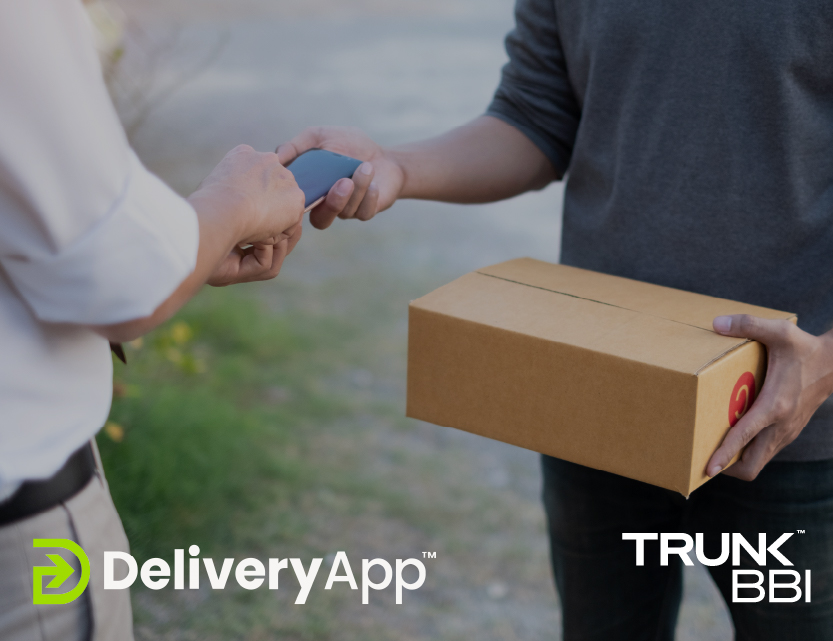Women in Tech SEO is a global community created to discuss, share, and learn all things SEO. The aim is to empower and inspire women within SEO roles, giving them the tools they need to accelerate their careers, while also allowing us to connect and network with one another.
The Women in Tech SEO Festival is an annual conference held in London, where thought-leaders share their knowledge with marketing professionals from across the globe. Every year, 10 speakers offer talks across the day, spanning four sessions: Analyse, Advance, Innovate, and Empower.
As a leading creative and activation marketing agency with a specialist SEO and PR team, we knew the annual conference would offer invaluable insight. This year, three members of our Organic Search team, Fiona, Amy and Lilidh, attended the conference—and we learned a lot. In true Women in SEO spirit, our team wanted to share their knowledge with others, including you. In this blog post, we’ve rounded up our key takeaways from each speaker at the conference, with top tips to help you elevate future SEO strategies.
Session 1 ‘Analyse’
Yagmur Simsek on information architecture audit for SEO success
The first session, ‘Analyse’, was led by SEO and Content Strategist Yagmur Simsek, who discussed the importance of auditing your website’s informational architecture (IA).
Understanding and auditing your website’s IA is key to maximising user experience and accessibility. If people are unable to navigate around your site or find the pages they need, it’s likely they’ll leave—and they probably won’t return. Alongside that, understanding your website’s IA helps to optimise your ranking on search engines, because it improves page discoverability. As a result, more people will be directed to your site when searching for questions or solutions.
So, how do you conduct an effective IA audit? Here’s what Yagmur recommended:
- Ensure copy speaks in your target audience’s language and addresses their pain points.
- Review your URL structure and keywords to ensure they’re user-friendly.
- Consider how your audience interacts with your internal search box, including what they’re searching for and whether they’re using the search box because they can’t find what they’re looking for in the navigation.
- Look at competitor examples to compare against your navigation and identify any missing opportunities. You can then use competitor data to gain internal buy-in.
- Assess how many clicks it takes to get to important pages from your home page, and which pages you want to give precedence to.
- Consider the strategy you use for adopting filters, faceted navigation, and product sorting.

Syphaïwong Bay on creating and automating content in a meaningful way
Next up, Syphaïwong Bay took to the stage to talk about creating and automating content in a meaningful way. In essence, this involves a combination of technical and editorial techniques that ensure copy stands out on search engines. And, importantly, that copy reaches your intended audience.
It’s also important to build enriched formats through structured data. By clearly labelling data, Google can understand your content and its different elements better. Google then uses this data to help serve users the most useful results possible on search engine results pages.
In his book Outliers, Malcolm Gladwell stated how we need to study a subject for around 10,000 hours to become an expert. But this begs the question: how do we write like experts and stick to Google’s EAT guidelines? Syphaïwong therefore proposed that the number of hours you spend studying isn’t the most important thing—it’s knowing your sources and choosing the most credible ones.
Once you have credible sources, you need to combine subject expertise with engaging copywriting to keep the user reading. There’s been a lot of talk on Natural language Generators recently, such as ChatGPT, and how AI removes the need for a human copywriter to write engaging content. Yet, Syphaïwong pointed out that these machines and bots simply aggregate a lot of content without citing their sources—and this doesn’t make a good copywriter. A good copywriter knows their audience and uses research to deliver powerful, engaging copy.
To create meaningful content, you need reliable sources. Here are some tools to try:
- Search credible sources on Google Scholar.
- Seek experts on your topic area, either locally or online.
- Use APIs within tools to speed up manual tasks, such as Python or Markdown to convert files from .doc to .html to .cvs for quicker CMS upload.
- Don’t forget your (real) goals, because creating better content means better relevance. And that means you’ll be more interesting and accurate than your competitors.
Chima Mmeje on the seven pages to prioritise when building a topic cluster
For the final part of the day’s ‘Analyse’ segment, SEO Content Strategist Chima Mmeje, discussed the seven to pages to prioritise when building a topic cluster.
Essentially, a topic cluster is an SEO strategy that groups multiple pieces of content with a core topic and related subtopics. For instance, a topic cluster’s core topic could be mobile phone insurance, and the related subtopics may be how to protect your phone when travelling or best insurance policies for young adults. By creating multiple pieces of content within a topic cluster, you can better serve your audiences with useful, engaging content—and use internal linking to drive people towards other pages.
Chima suggested the prioritising the following pages:
- Money pages. Money pages are those leading to a direct sale, including product and landing pages. This also includes longer form content, such as demo pages, pricing pages, and pages targeting keywords such as “best X tool” or “best X (tool) for X (scenario).”
- Downloadable asset pages. Downloadable asset pages help users with the unique problem they’re looking to solve. Often, they come in the form of checklists, templates, plans, and calculators. Although these pages don’t generate a direct sale, they can help build your reputation, authority in the market, and brand recognition. In addition, they also help build your email marketing lists by making the downloadable assets gated. With users’ contact info, you can then serve marketing emails to drive more website visits and downloads.
- Competitor pages. If you operate in a market where users search for comparable tools you offer, you need to stand out. One tool to try is comparison pages illuminating your service, such as “your brand vs brand Y”.
- Solution X for audience Y. Solution pages refer to personalised landing pages specific to your audiences’ individual problems. These dedicated pages discuss problems and solutions in-depth, such as “Best accounting software for freelancers”. With these landing pages, it’s important not to focus on your product features. Instead, home in on your audience’s problems and how your service can help solve them, so they can see the benefits for themselves. By making it ultra-specific to the audience you’re talking to, they’ll feel like you’re solving their unique problem, and will naturally look to your service as a solution.
- Vs keywords for relative terms. These are very similar to competitor pages; however, they’re more about taking two audience challenges (that are also common keywords) and helping them with considered information. For instance, your readers may be struggling to decide whether to opt for quantitative or qualitative research for an advertising campaign. In this case, your page could be titled “Quantitative vs qualitative: what’s best for your campaign?” Relative terms pages allow you to rank for both sets of keywords while also helping your audience with engaging content.
- Mid-volume keywords to showcase authority. Utilising mid-volume keywords can lead to useful advice pieces for your reader. You can also use them as an opportunity to position your brand as an authority that cares for your reader. To help craft these pages, look for keyword modifiers such as ‘tips’, ‘strategies’ and ‘mistakes to avoid’.
- Sales content. Sales pages are often bottom of the priority list, but they can elevate your brand and generate sales. Pages hosting white papers, case studies, eBooks, and product demos, or personalised landing pages are some of the biggest assets for converting customers. So, it’s wise to prioritise them.
Session 2 ‘Advance’
It was time to move on to our next session of the day—’Advance’. SEO expert Myriam Jessier kicked tings off with a brilliant seminar on ‘going down the SEO image rabbit hole’.
Myriam Jessier going down the image SEO rabbit-hole
Images help people buy online, because they satisfy the visual experience. But to make images work for your website, they need to be optimised. Myriam explained how Google’s Cloud Vision AI and machine learning technology analyses essential information to help understand images. This includes:
- Faces and emotions
- Objects
- Tags
- Web entities
- Text
- Properties
Images need to be clear, readable, and interpretable, so they can be understood by search engines. Providing clear image properties also helps Google understand your pictures—this includes:
- File name – Create descriptive, keyword-heavy file names
- File format – It could be PNG, JPEG, or Webp
- URL path – Provide the correct image file structure
- Secret attribute – Specify whether there are multiple image versions of varying size and quality
- Title attribute – Use an appropriate title for the image file
- Alt text – Consider alt text for different scenarios, for example, “useful gift for new parents”, if the subject matter is for a couple with a new-born
An image-heavy website can also cause a layout shift issue—this is when an element on a website changes its position as other elements are loaded. To review the stability of your website, try checking your Core Web Vitals within the Page Speed Insights tool.
Bethan Vincent on getting executive buy-in throughout your career
Marketers are brilliant at engaging their external audience, but as Marketing Consultant Bethan Vincent pointed out, we’re not always the savviest with our internal stakeholders.
Whether you’re leading a campaign and need to convince a team, or trying to illustrate a particular benefit of an SEO strategy, it’s difficult to achieve your aims without persuading and engaging your internal audience.
To help with this, Bethan shared the following trusty tips:
- Work with your internal audience – Get inside their challenges and put yourself in their shoes. You could shadow them or sit in on their team meetings. Map your internal audience to understand their influences, stake, and how much information they need.
- Be specific and measurable with the stakeholders you’re pitching to – Connect metrics back to revenue, money, and hard figures.
- Drip feed your team’s success – Send weekly or monthly summaries with results, updates, and invitations to the wider team.
- If senior people interrupt, it’s actually a good sign – It shows they’re interested in what you’re saying. Bring the conversation back to the next steps, and above all, summarise.
- Be an interpreter – Don’t provide a dashboard without any commentary—give context, impact, and next steps. And don’t include metrics requiring background context.
- Understand your organisation’s cycle – Consider when, and how often, your business reviews budgets. Also, think about when you need sign off on the marketing plans, and how often this takes.
- Test your ideas – Talk through your ideas with someone trusted before broadcasting them to everyone.
Session 3 ‘Innovate’
For session 3, we put on our innovation caps as we joined a series of seminars on leveraging consumer behaviour, the latest tech, and data. First up, Giulia Panozzo, a neuroscientist turned SEO expert, spoke about the psychology behind customer behaviour and search.
Giulia Panozzo on the neuroscience of search
One of the main takeaways from Giulia’s talk was the importance of heuristics in search. Heuristics are the mental shortcuts humans use to solve problems in a quick and efficient way. Although this might not seem entirely relevant at first, it’s actually incredibly important for Google—and, in particular, how we engage with search pages. We’re often bombarded with similar results, so users try and find a mental shortcut to avoid an overload of results.
To help navigate users to your site, Giulia advised using these psychological components in your SEO strategy:
- Cognitive bias – The brain’s attempt to simplify information is based on an individual’s memory or attention. So, displaying keywords at the start and end of text means a user is potentially more likely to recall them.
- Numerical bias – Often, individuals associate more value with difference in figures, rather than the actual value. Displaying savings in percentages and not numbers can help your audience see more value.
- Negative bias – The brain has a tendency to register and rely on negative experiences more than positive ones. Users give more value to the negative and will react to “worse” or “never” as keywords, so it’s worthwhile considering these in your content plans.
- Confirmation bias – People have a tendency to process information by looking for, or interpreting, information consistent with what they believe to be already true. So, addressing customer concerns can help nurture and convert users.
- Reading process – English speakers read left to right, although not in order and we skim over some words. Therefore, the primary keyword doesn’t need to be first in the sentence for a user to recognise it.
- Compromise effect – Humans often choose intermediate options, which means we usually opt for the middle price option. If possible, consider a tiered pricing strategy.
- Social proof – The brain is socially wired, and we’re likely to copy actions and imitate others, so show evidence of people using your solution or product, or talking about it. Testimonials sell.
Josephine Haagen on natural language processing for SEOs
Next, Josephine Haagen discussed why natural language processing is essential for SEO. To understand this better, she explained how the natural language can be broken down into either understanding or generation tools:
- Natural Language Understanding – Tools to comprehend language, such as Google language model BERT (Bidirectional Encoder Representations from Transformers).
- Natural Language Generation – Tools that generate language, such as Chat GPT.
These machines don’t have the context that humans do, so they use next sentence predication to make connections. They operate by processing huge amount of data, keywords, and searches to serve the user with the right result.
The good news is, we can optimise text for natural language processing to help with search results. Josephine recommended three top tips:
- Choose a three-word phrase – Any less isn’t enough context, and more can bring confusion.
- Avoid use of numbers – Ensure there are no numbers as machines struggle to interpret numbers and text together.
- Ensure the noun isn’t also an adjective – Tools break words down into tokens and assign attributes to them, so it can be hard to understand words that could be one of two things.
Lazarina Stoy on data storytelling
For session 3’s final seminar, SEO and Data Science expert Lazarina Stoy shared valuable advice on data storytelling. Importantly, she mentioned how we have access to tons of data in SEO, but we often don’t use it to tell stories. However, we should make use of this data so that we can deliver tailored and useful content to specific audiences.
Often, different actions emerge from the same data. For example, you may be presenting the same information to two audiences, such as a CEO or a team leader. Each individual has different values, wants, and pain points. So, while they may want access to the same data, it should be presented in different ways to help them see the value.
Data storytelling is all about building relationships with your audience. First, you need to understand what they need to know, and then assess the best way to present that information to convey the key points. We can use the following framework to help:
- Set up – Assess the reality you’re painting and what has happened.
- Conflict – Understand conflict that has changed this reality.
- Resolution – Present the solution in a way the audience understands and will value.
To deliver a successful data story, apply the following concepts:
- Data – Make sure any data you provide is accurate and reliable.
- Narrative – Provide a compelling narrative aligned with the needs of the stakeholders.
- Visuals – Assist pattern and trend recognition with images to make the data easier to understand.
Session 4 ‘Empower’
Helen Politt on levelling up your SEO Career
The day concluded with a final session on furthering your career in SEO. Bringing her stellar advice to the stage, Helen Politt, Head of SEO at Classic & Car, inspired the audience with advice on how to determine and develop your goals in SEO. Here’s our summary of the need-to-know information.
Carry out a skills gap analysis – Create a training matrix for all the skills required in your role and future roles, and assess where you currently are against these skills, in terms of experience, knowledge and confidence. Use this to identify your training needs.
Identify your primary motivator – Reflect back at the end of each day or each week and think about what it is you have enjoyed, and what you haven’t enjoyed/want to do less of.
Identify potential blockers in your career progression – Include potential blockers for your line manager and seniors. By pre-empting these, and trying to put measures in place to remove them, you’re less likely to come up against a ‘no’ further down the line.
Keep a record of your achievements – Note down positive feedback from clients and colleagues. Consider what you’re doing outside of your day-to-day remit.
Look at job ads – Identify roles a few stages ahead of you and the skills they require. Think about how you can go about building those skills.
Introduce new skills to your current role – Shadow someone within your business, and attend webinars/talks/conferences you aren’t familiar with to broaden your horizons.
Think about the level of responsibility you want — Do you want to be managing a team of 10 people? Or do you want to be working in a team of one with no reporting?
Leyla Okhai on standing in your confidence
Before we left for the day, TEDX speaker Leyla Okhai gave us a few, final takeaways on how to elevate our self-confidence. First, she highlighted how ‘Confidence’ comes from the Latin word ‘fidere’, which means ‘to trust’. Importantly, she explained how being confident means having trust in ourselves and our team members for whatever the outcome may be.
Leyla also talked about considering ‘process over perfection’. Striving for perfection isn’t necessary. Rather, we should focus on the process we’re carrying out and executing it correctly.
Find out what SEO can do for you
If you’re looking to learn more about SEO, or need advice on your business approach to organic search, get in touch with the TrunkBBI SEO team using the form below to see how we could help scale up your business with engaging, relevant content for your audience. Alternatively, feel free to call us on 0161 711 1000.




